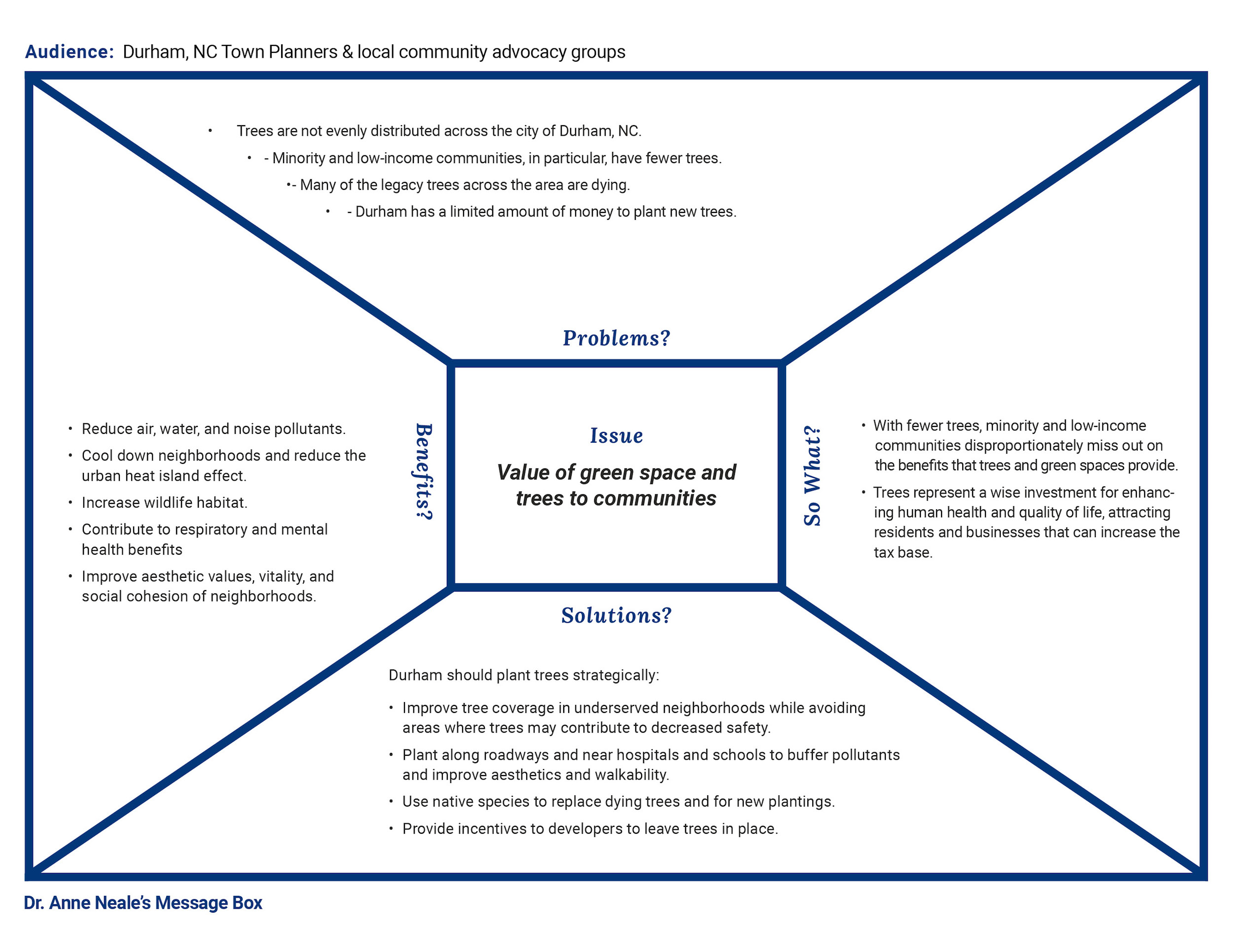Dr. Anne Neale’s Message Box
Dr. Anne Neale is a research scientist at the U.S. Environmental Protection Agency’s Office of Research and Development. She is the Project Lead for EnviroAtlas, an online, open-access tool allowing users to view, analyze, and download a wealth of geospatial data and other resources related to the benefits humans receive from nature. This data provides a framework to inform decisions and policies at multiple spatial scales, educate a range of audiences, and supply data for research.
Anne prepared this Message Box as part of a COMPASS workshop to illustrate how the information made available through EnviroAtlas (in this case, about the location of trees in communities) can be used to enhance tangible benefits to communities and the environment on the ground—including in her local community of Durham, North Carolina. She geared her Message Box to local planners to help guide decision-making about tree plantings in the city.
Read Transcribed Message Box Here
Dr. Anne Neale’s Message Box
Audience: Durham, NC Town Planners & local community advocacy groups
Issue: Value of green space and trees to communities
Problems?
- Trees are not evenly distributed across the city of Durham, NC.
- Minority and low-income communities, in particular, have fewer trees.
- Many of the legacy trees across the area are dying.
- Durham has a limited amount of money to plant new trees.
Benefits?
- Reduce air, water, and noise pollutants.
- Cool down neighborhoods and reduce the urban heat island effect.
- Increase wildlife habitat.
- Contribute to respiratory and mental health benefits
- Improve aesthetic values, vitality, and
social cohesion of neighborhoods.
Solutions?
Durham should plant trees strategically:
- Improve tree coverage in underserved neighborhoods while avoiding
areas where trees may contribute to decreased safety. - Plant along roadways and near hospitals and schools to buffer pollutants and improve aesthetics and walkability.
- Use native species to replace dying trees and for new plantings.
- Provide incentives to developers to leave trees in place.
So What?
- With fewer trees, minority and low-income communities disproportionately miss out on the benefits that trees and green spaces provide.
- Trees represent a wise investment for enhancing human health and quality of life, attracting residents and businesses that can increase the tax base.
